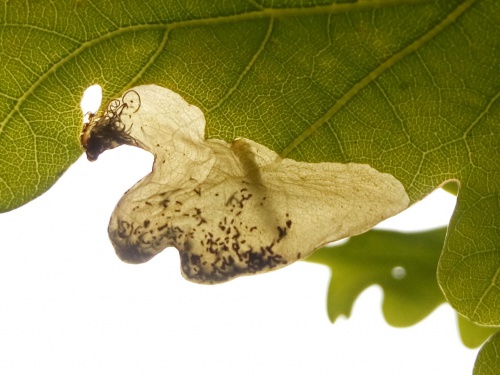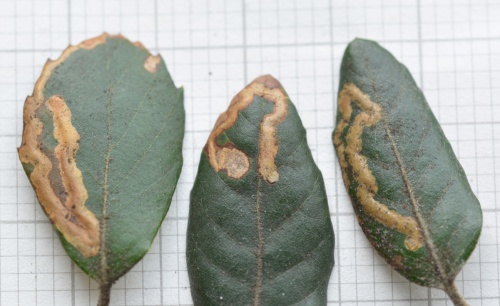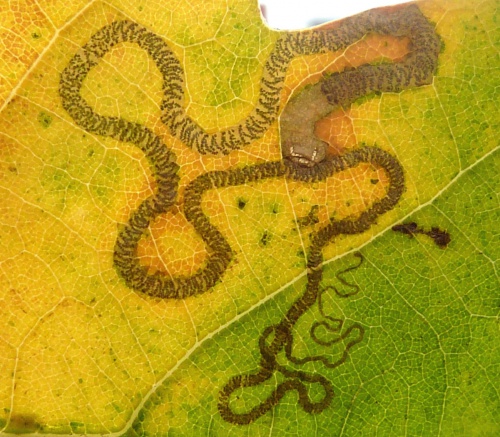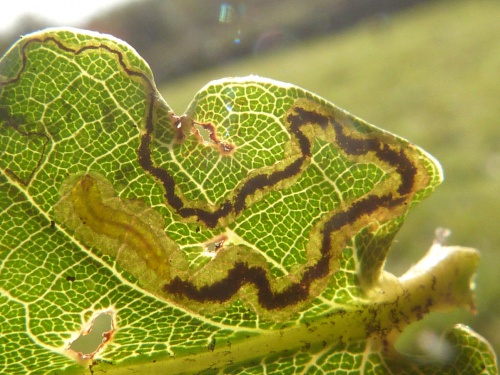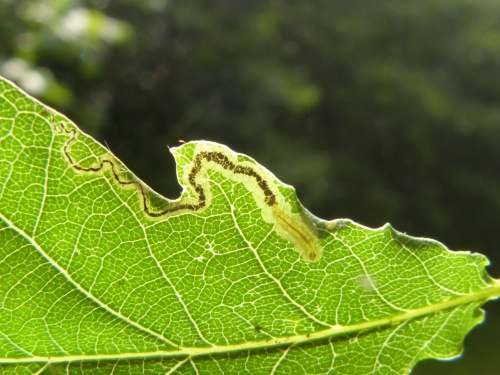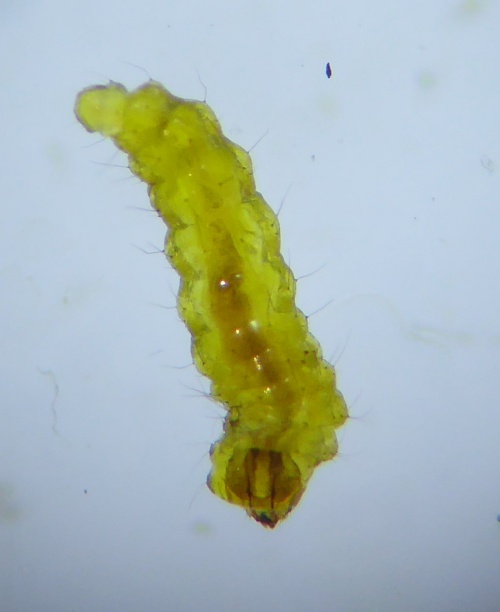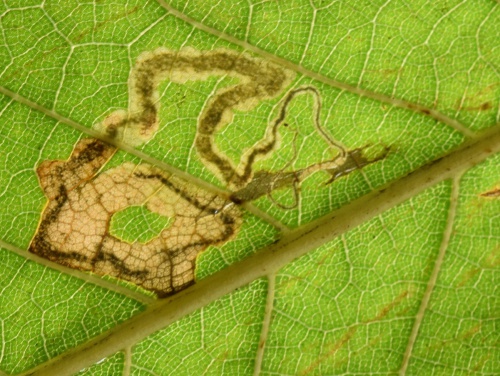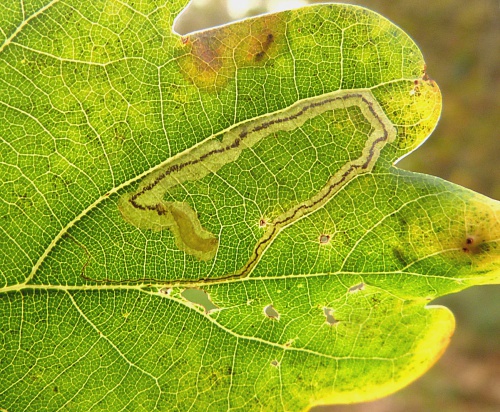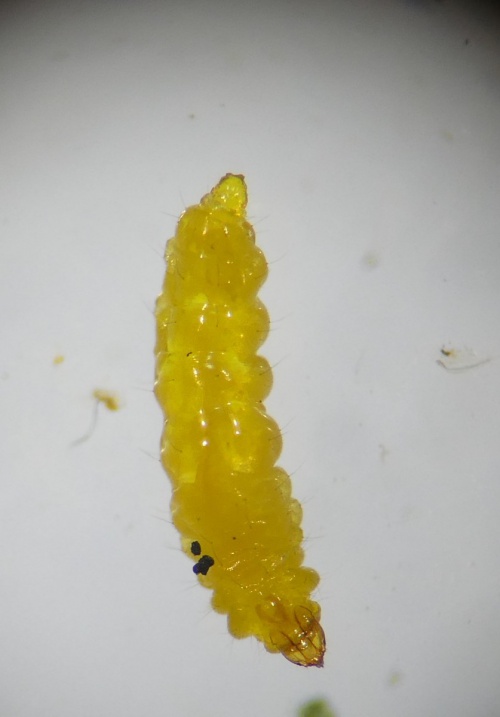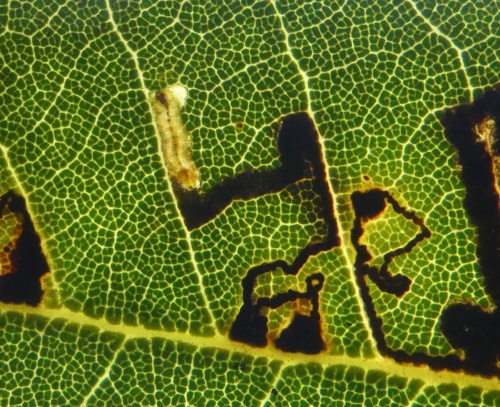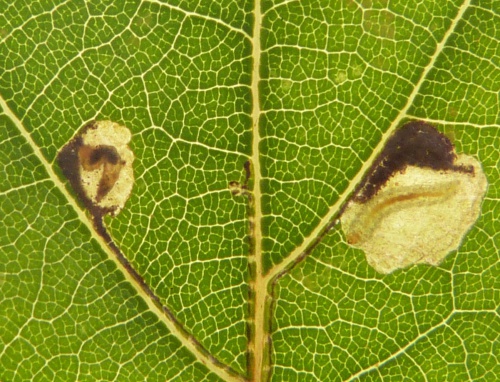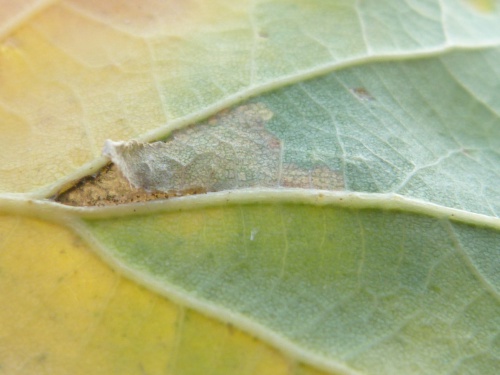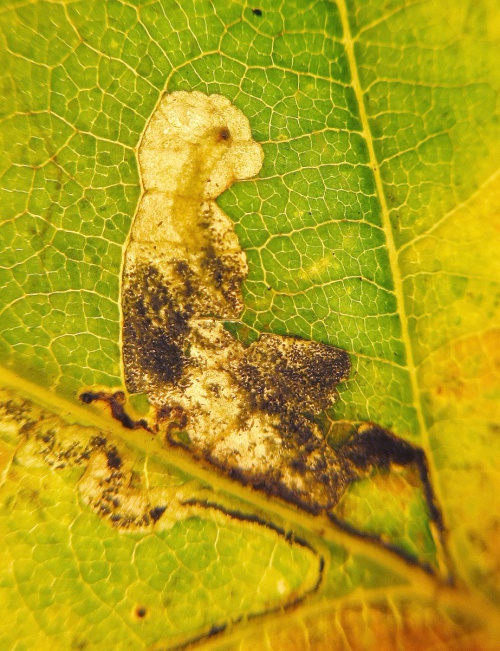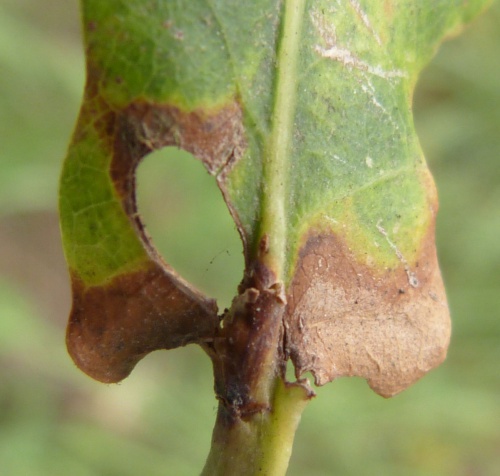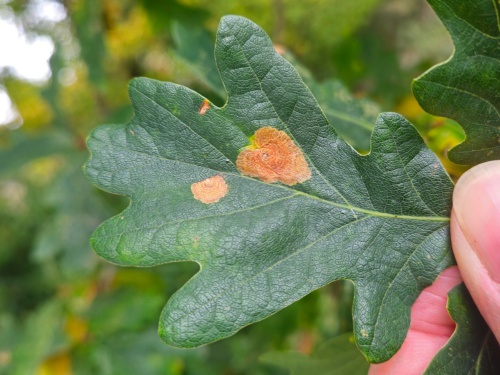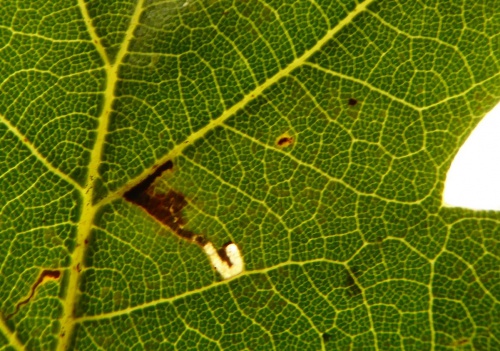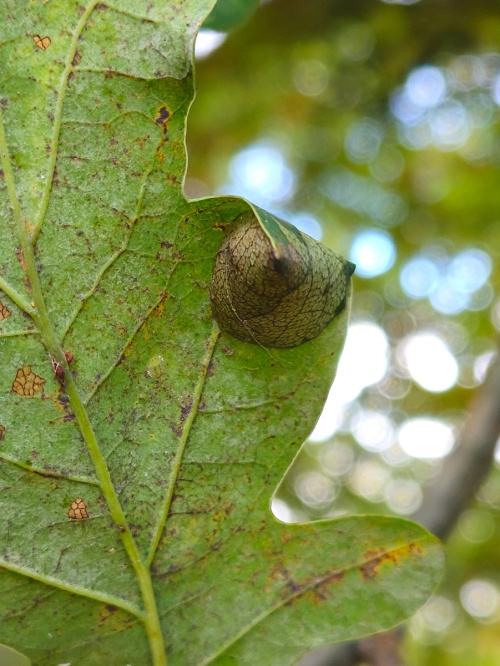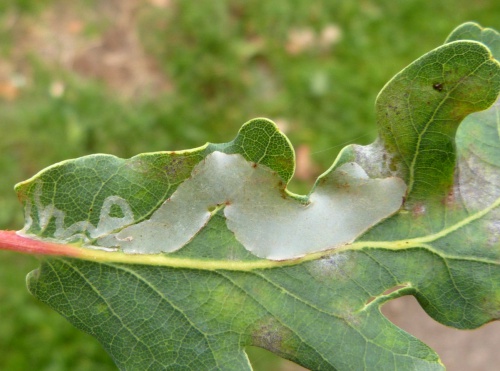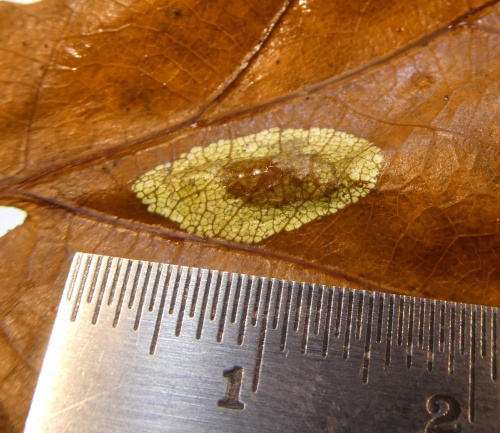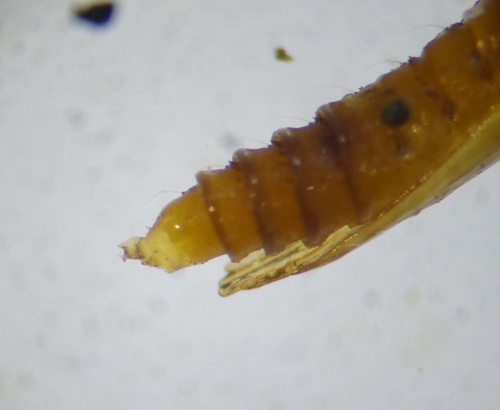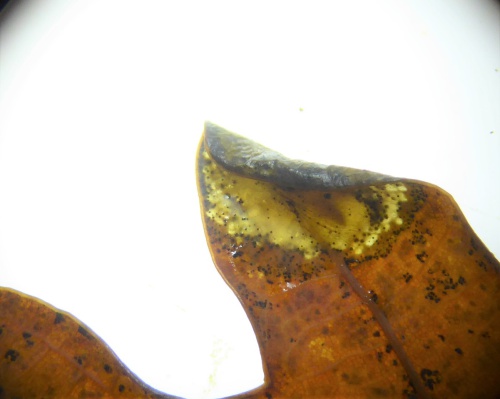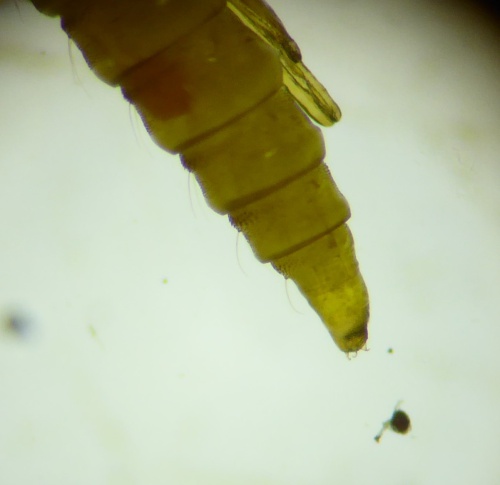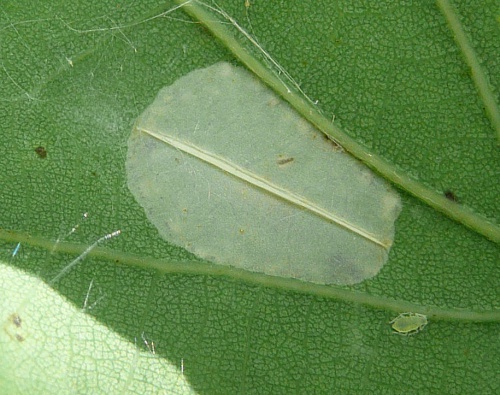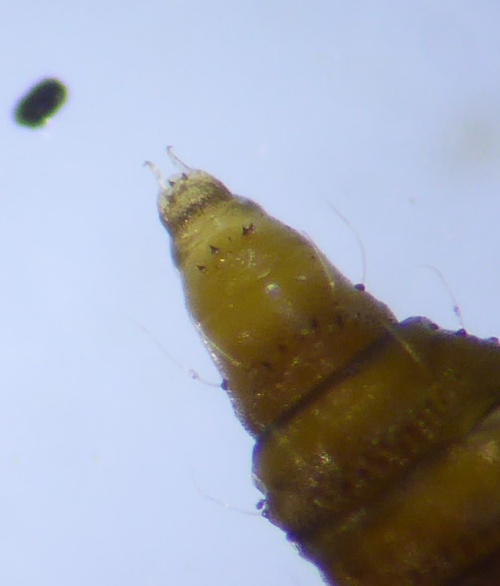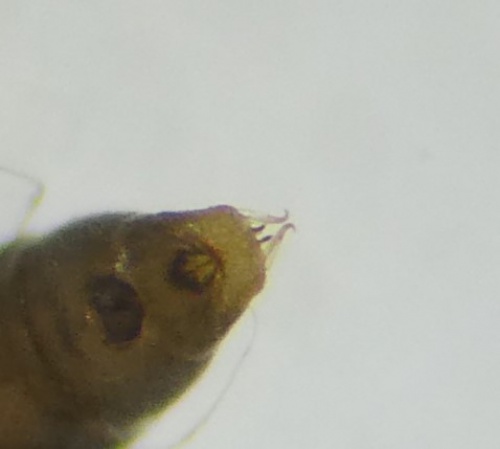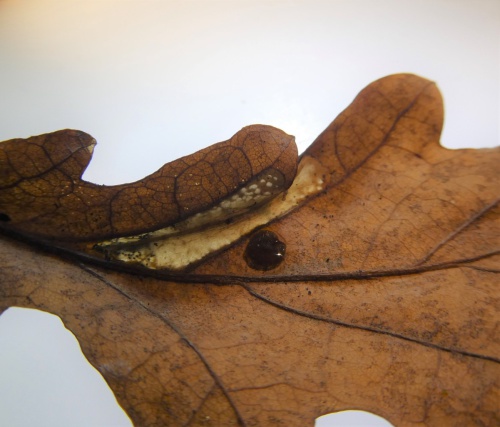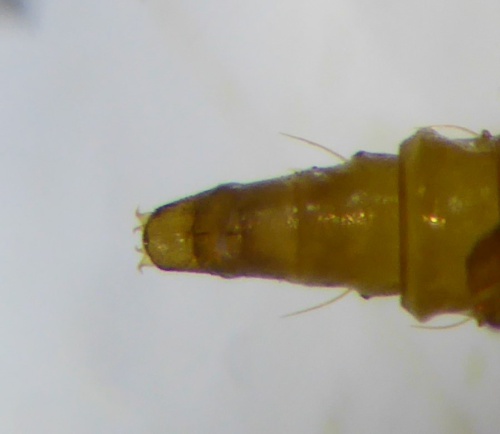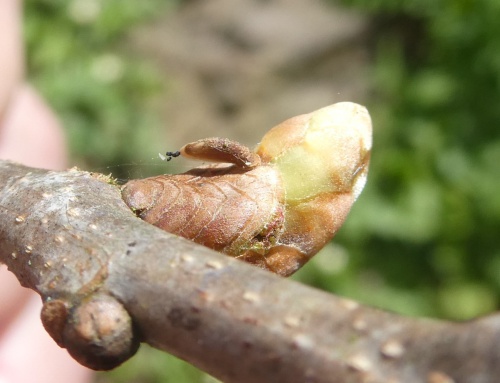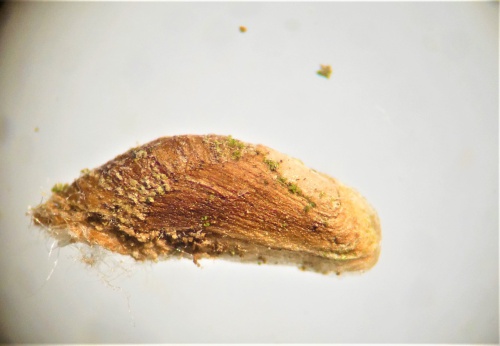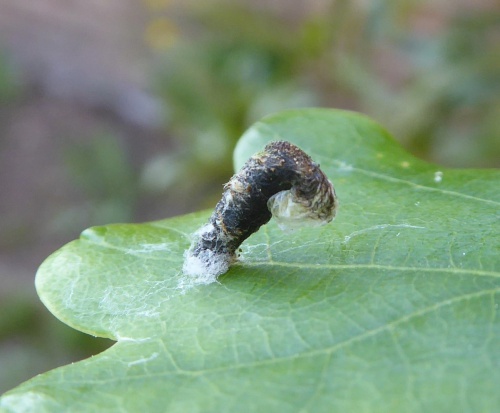- Home
- Leaf-mines
- Oaks and Sweet Chestnut
- Moths (leaf mines on Oak and Sweet Chestnut)
All images on this website have been taken in Leicestershire and Rutland by NatureSpot members. We welcome new contributions - just register and use the Submit Records form to post your photos. Click on any image below to visit the species page. The RED / AMBER / GREEN dots indicate how easy it is to identify the species - see our Identification Difficulty page for more information. A coloured rating followed by an exclamation mark denotes that different ID difficulties apply to either males and females or to the larvae - see the species page for more detail.
Leaf-mines
The gallery below covers all leaf-mines in VC55 found on trees, shrubs and climbers, plus the few herbaceous species mined by moths or sawflies. All VC55 leaf-mines caused by moths and sawflies are included. Not all leaf-mines on herbaceous plants are included; it is likely that many more leaf mines caused by Agromyzid flies are present in VC55. A link to the NatureSpot gallery is here, or we recommend searching the website of the national recording group.
Leaf-mining is a specialised form of larval feeding on plants. For at least part of their life, the larva of some species of moths, flies, sawflies and beetles live and feed within a leaf, usually between the upper and lower epidermis; some may also pupate within the leaf. For many of these species, the pattern of feeding and deposition of frass may be unique to that species and, in combination with the host plant and characteristics, this lets us identify the species.
Most (but not all) moth and sawfly leaf-miners are host-specific. A few species will mine several different host species - especially the moths that mine leaves in the Rosaceae family. In these cases, the mine is included in the gallery of the most typical species; a note is at the start of the alternative host gallery. A few species mine stems, pods or fruits; these are included in the gallery below even though they are not strictly leaf-miners. The gallery also includes some moth species - mostly Coleophoridae - where the larva feed externally from inside a protective case, usually made of plant fragments. Many of these cause small 'fleck mines' in the leaf, others feed within seeds, etc.
Note that two Agromyzid flies will mine many species of herbaceous plants - Liriomyza strigata and Chromatomyia horticola/syngenesiae - see main species page by clicking on the links. If you can't identify the mine on a plant, it is worth checking for these. Other Agromyzidae species mine a variety of plants within a host species family.
Important! Not all leaf-mines can be identified. Sometimes it is necessary to rear the larvae to adults. Leaf-mining is an aspect of a species’ behaviour; it can vary in many ways. Environmental condition of the host plant affects behaviour, and larvae can mine unexpected hosts.
- ALWAYS record the host plant – all keys and websites start with the host.
- ALWAYS include the word “MINE” in your comments otherwise it may be taken as the adult organism or gall-causer.
- Be careful of sources – there are a lot of hopeful or misidentified photographs on the internet.
- Retain a specimen of any rarities or County firsts so that they can be verified by an expert as it is not always possible from an image.
- Take a photograph of the fresh specimen with back-lighting to show the frass pattern. If you can, dissect out the larva/pupa and photograph.
- Note whether it is a tenanted or vacated mine e.g. “TM on Birch”, “VM on Birch”.
Identification help
- British Leafminers http://www.leafmines.co.uk/
- Plant Parasites of Europe https://bladmineerders.nl/?lang=nl
- Agromyzidae of Great Britain and Ireland https://agromyzidae.co.uk/
- Sterling, P & Parsons, M. (2023) Field Guide to the Micro-moths of Great Britain and Ireland. 2nd edition. Bloomsbury
- Smart, B. (2018) Micro-moth Field Tips Vol.1 Lancashire & Cheshire Fauna Society
- Smart, B. (2021) Micro-moth Field Tips Vol.2 Lancashire & Cheshire Fauna Society
- Langmaid, J.R., Palmer, S.M. & Young, M.R. (2018) A Field Guide to the Smaller Moths of Great Britain and Ireland. 3rd edition. BENHS
- Timms, S. (2021) Birch leaf-miners. LRES - LESOPS42
- Timms, S. (2023) Oak leaf-miners. LRES - LESOPS61
Oaks and Sweet Chestnut
Oak leaf-mines caused by moths in Stigmella or Phyllonorycter genus are difficult to identify; most require examination of larvae or pupae. Some can only be recorded on oak is the adults are reared out.
Sweet Chestnut is included because the miners found on this host are also present on Oak - Stigmella samiatella, Tischeria spp. and Phyllonorycter messaniella; possibly also Dyseriocrania subpurpurella.
See Timms, S. (2023) Oak leaf-miners. LRES - LESOPS61


